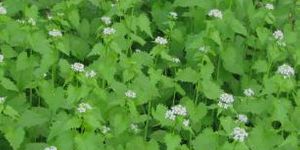Earth & The Environment
Reduced Southern Ocean Convection Raises Climate Regulation Concerns
MAR 31, 2014 12:00 AM PDT
Share
MIT Engineers Design Functional Living Materials
 The list of intersections of biological and man-made systems continues to grow, as researchers look at novel ways to enhance biological systems to introduce new properties. A research team from the Massachusetts Institute of Technology (MIT) has added to this growing list by creating altered bacterial biofilms that are capable of incorporating non-biological components on the nano-scale. Quantum dots and gold nanoparticles are two of the examples cited.
The list of intersections of biological and man-made systems continues to grow, as researchers look at novel ways to enhance biological systems to introduce new properties. A research team from the Massachusetts Institute of Technology (MIT) has added to this growing list by creating altered bacterial biofilms that are capable of incorporating non-biological components on the nano-scale. Quantum dots and gold nanoparticles are two of the examples cited.In essence, the team has combined living systems with non-living functional components, thus gaining the advantage of both systems. The living bacterial films can respond to their surroundings and create complex molecular arrangements, while the non-living materials can provide properties such as light emission or the conducting of electricity. Their work was published in a recent issue of Nature Materials.
The research team formed their films using E. coli bacteria because of their "curli fibers", which are strings of amyloid proteins that the E.Coli bacteria uses to adhere to surfaces. Curli fibers are composed of repeating CsgA protein units.
These units are relatively easy to modify through adding alternate protein fragments known as peptides within the repeating units. Peptides can attract and hang onto nanoscale non-living materials, thus incorporating them into the films that are formed.
The team was able to program the cells to alter the compositions of the curli fibers, or the conditions under which the curli fibers undergo changes. This allowed them to tune and control the cells to incorporate specific materials in biofilms and produce a desired property.
In a way, the researchers tore down the biosystem in order to rebuild it, starting with disabling the natural ability of the bacterial cells to manufacture CsgA.
The next step was to integrate a component that allowed them to dictate the circumstances when the cell could produce CsgA. For this work, the team engineered the cells to only produce CsgA when a chemical known as AHL was present. Under these conditions, the CsgA will coalesce, thus forming a biofilm.
To provide a contrast, E.Coli cells were engineered to create peptide-tagged CsgA, incorporating peptides containing histidine. The peptide-tagged reaction was set to be triggered by the presence of a different chemical known as aTc.
By selectively controlling exposure to AHL and aTc, the team could effectively "pattern" a biofilm, creating separate peptide-tagged and non-tagged areas. Gold nanoparticles that are introduced into the environment will be attracted to and held by the histidine in the tagged areas, thus forming gold nanowires within the biofilm-a living electrical circuit of sorts.
Basic electrical conductivity is just a proof of concept for more interesting hybrid materials to come. Hybrid materials of this nature could be developed for a variety of uses-from tailored design of solar cells or specialized biosensors to providing platforms for tissue engineering and teaming with enzymes to increase the efficiency of biofuel production.
As the technology progresses and scientists become more familiar with the possibilities, limitations and economics of practical applications, we can expect even more interesting uses to crop up-and the intersection of biological systems and man-made systems will grow even further.
You May Also Like
Loading Comments...








